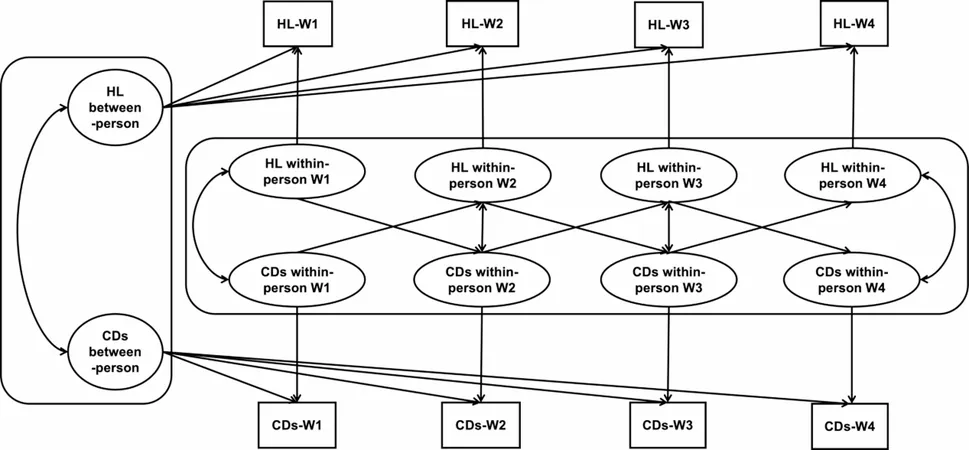
Unlocking Health in China: The Battle Against Multimorbidity in Aging Populations
2025-06-07
Author: Wei Ling
Chronic Diseases: A Rising Threat to Public Health
Chronic diseases have become a silent epidemic, leading the charge as the primary cause of global morbidity and mortality. In China, over 44% of middle-aged and older adults grapple with these conditions, and 30.4% face the even graver challenge of multimorbidity—living with at least two chronic diseases. This spiraling issue threatens not only the health of individuals but also compromises the healthcare system and exacerbates costs.
An Aging Population in Crisis
Projecting into the near future, China's aging population is set to escalate dramatically, with predictions indicating that by 2035, more than 30% of the population will be aged 60 or over. This rapid aging, compounded by healthcare disparities between urban and rural settings, makes tackling multimorbidity a pressing priority. The Chinese government's initiatives, like the "Healthy China Action Plan" and the "Healthy China 2030 Initiative," are rallying efforts to instill a proactive health paradigm where individual responsibility for health is paramount.
The Power of Healthy Lifestyles
Adopting healthy lifestyles can serve as a formidable weapon against chronic diseases. Engaging in regular exercise, quitting smoking, moderating alcohol intake, ensuring adequate sleep, and maintaining a balanced diet significantly delay the onset and progression of these diseases. Evidence underscores that individuals adhering to multiple healthy lifestyles enjoy not only reduced incidences of chronic diseases but also enhanced longevity.
Unveiling Hidden Trends: Longitudinal Insights Through Dynamic Modeling
To truly grasp the dynamic interplay between lifestyle choices and chronic diseases, our study harnessed four years of longitudinal data from the China Family Panel Studies. By employing advanced modeling techniques like the Random Intercept Cross-Lagged Panel Model (RI-CLPM), we dissected relationships over time to reveal how an individual’s health status and lifestyle choices influence one another. This innovative approach sheds light on the evolving nature of multimorbidity and offers fresh insights into disease trajectories.
A Shocking Shift: The Rise of Multimorbidity in Chinese Adults
Between 2014 and 2020, our findings revealed a sobering trend: the percentage of adults free from chronic diseases plummeted from 76.2% to just 46.8%. Meanwhile, those with multimorbidity swelled from 9.2% to a staggering 29.1%. Such transitions are alarming, highlighting the increasing complexity of health challenges faced by a rapidly aging society.
The Tug-of-War Between Health Lifestyles and Chronic Diseases
Remarkably, a causal relationship was unveiled: healthier lifestyle choices led to reduced chronic disease burdens initially, but this effect waned over time. By 2018, as chronic diseases intensified, the likelihood of adopting healthy lifestyles decreased. This correlation suggests a vicious cycle where worsening health hampers the ability to maintain proactive health behaviors.
Understanding the Drivers Behind Multimorbidity
The acceleration of multimorbidity can be linked to intertwined biological and psychosocial factors. Chronic conditions trigger inflammation and metabolic disruptions, sowing the seeds for further health issues. Psychological burdens, such as depression and anxiety, further exacerbate the difficulty in adhering to healthy lifestyle choices. This interplay reveals the necessity of addressing both health and psychological well-being in prevention strategies.
Policy Implications: Crafting Effective Interventions
Our research underscores the urgency for targeted interventions, especially in vulnerable groups—namely women, older individuals, and those in rural areas. By leveraging community-based strategies and emphasizing the importance of maintaining healthy behaviors in earlier stages of aging, we can create effective health promotion programs. These initiatives must also embrace technology, utilizing mobile health tools to empower individuals to manage their health better.
Conclusion: A Call to Action for Healthy Aging in China
In summary, as China navigates the complexities of an aging population rife with chronic diseases, the need for strategic, context-specific health interventions grows ever more urgent. By fostering a culture of preventive health and empowering individuals to take charge of their well-being, we can combat the looming threat of multimorbidity and enhance health outcomes for future generations.
 Brasil (PT)
Brasil (PT)
 Canada (EN)
Canada (EN)
 Chile (ES)
Chile (ES)
 Česko (CS)
Česko (CS)
 대한민국 (KO)
대한민국 (KO)
 España (ES)
España (ES)
 France (FR)
France (FR)
 Hong Kong (EN)
Hong Kong (EN)
 Italia (IT)
Italia (IT)
 日本 (JA)
日本 (JA)
 Magyarország (HU)
Magyarország (HU)
 Norge (NO)
Norge (NO)
 Polska (PL)
Polska (PL)
 Schweiz (DE)
Schweiz (DE)
 Singapore (EN)
Singapore (EN)
 Sverige (SV)
Sverige (SV)
 Suomi (FI)
Suomi (FI)
 Türkiye (TR)
Türkiye (TR)
 الإمارات العربية المتحدة (AR)
الإمارات العربية المتحدة (AR)